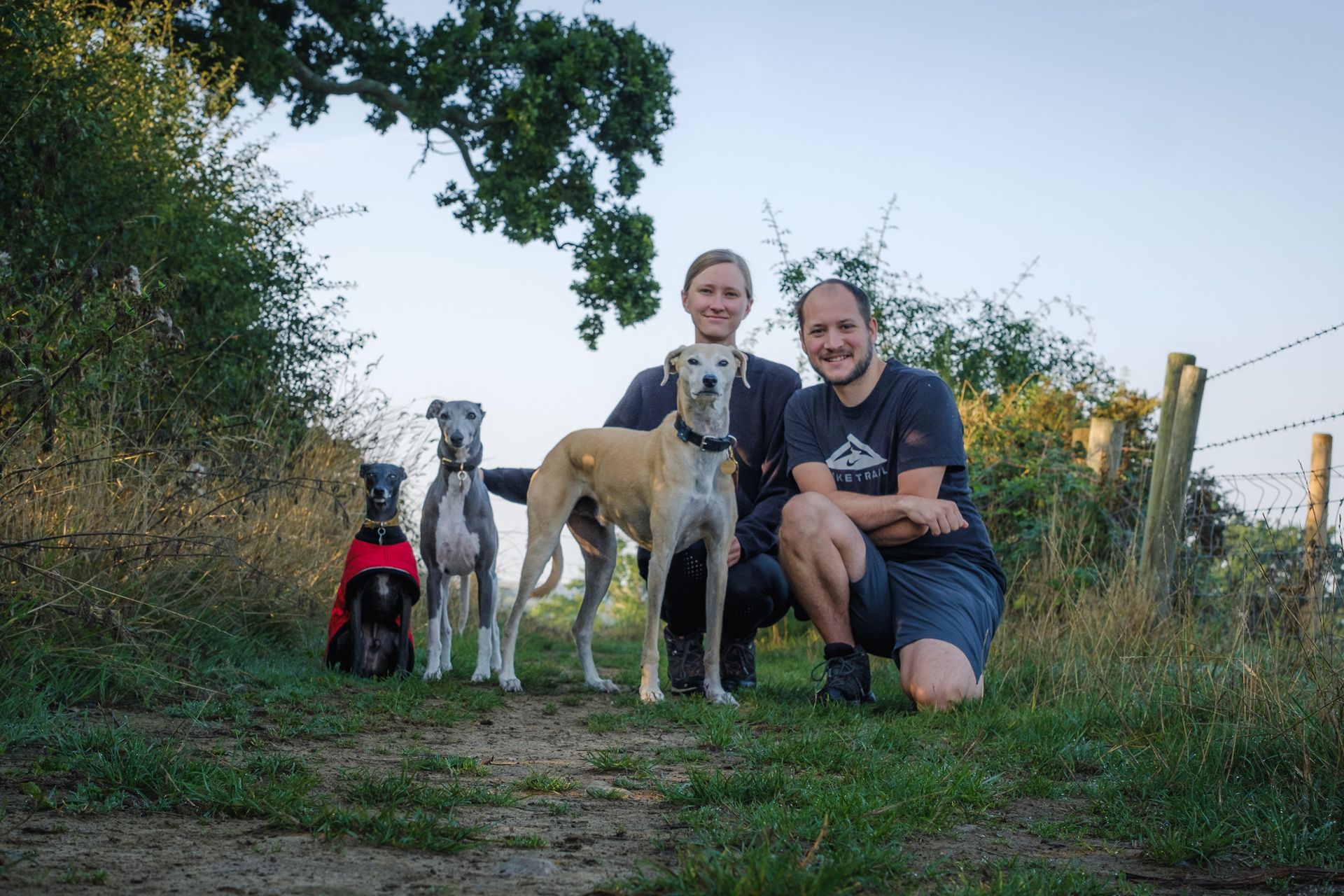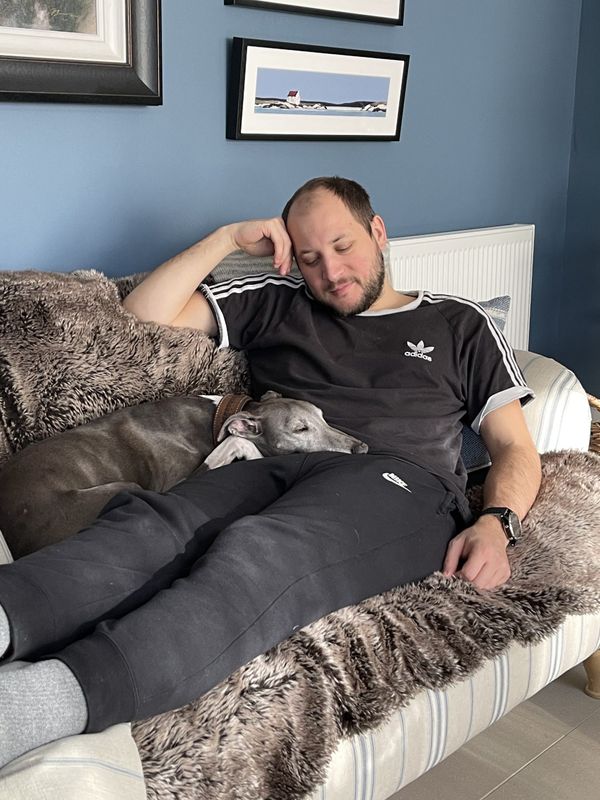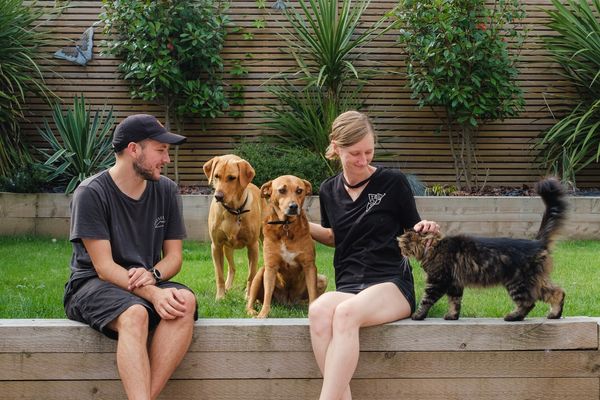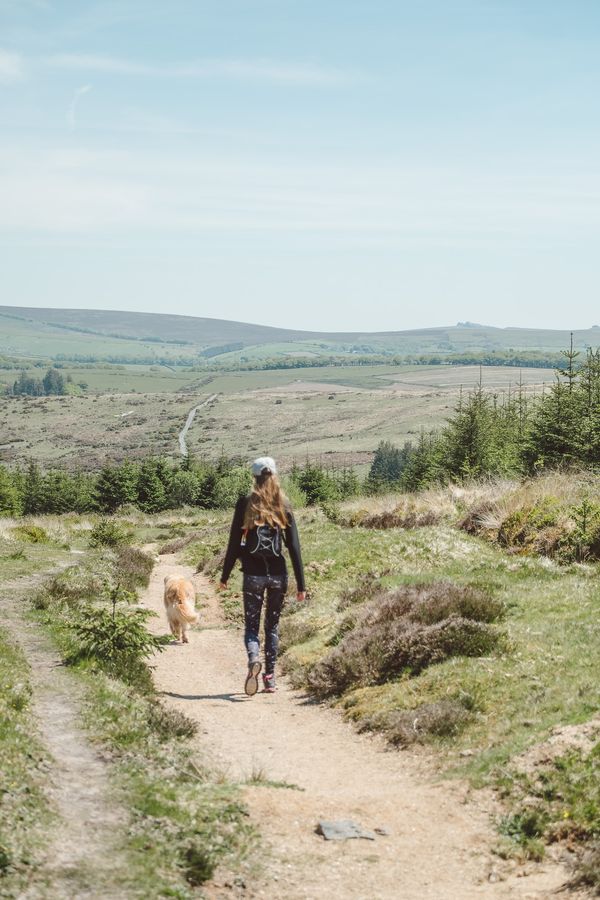For the first two years of our house sitting journey, we exclusively used a site where sitters care for pets for free in exchange for accommodation. Finding Rover changed everything. The process is very different to mutual exchange sites, if that’s what you’re used to, and while the perks differ it’s an equally rewarding way to house sit. We had been concerned that we’d lose a lot of freedom by joining a site where sitters are paid, after all, we had become accustomed to applying for house sits in places we wanted to explore, for pets we wanted to care for. Rover is definitely a different process altogether, but on the whole it’s been a fantastic way for us to find house sits. Now we’re in our sixth year of full time pet sitting, we’ve had so many lovely experiences through Rover and have clients who now plan their holidays around our availability! We can only speak from the sitter side of things, but here we outline our experience using the site in the U.K., explain how it works, and what pet owners and sitters can expect when using Rover. Make sure you check out our Rover FAQs blog post too!
Table of Contents
- What is Rover?
- How is Rover different to other pet sitting sites?
- How does it work as a sitter? What is the process?
- Receiving messages
- Booking a pet sit
- Cancellation policies
- How do you get paid as a sitter? What are the fees?
- What happens after a sit?
- Points to consider - learn from our mistakes!
- Our top tips for success as a Rover sitter!
- In conclusion…
What is Rover?
Rover is a website that connects pet owners with not only pet sitters, but pet boarders and dog walkers too. As we’re fully nomadic pet sitters, with no house or base of our own, we only offer the house sitting service where we stay in the pets’ home while the owner is away, caring for both the house and pets as part of our service. (Hence this blog post will mainly cover the house sitting service – though on Rover you can also offer boarding services, where the owners bring their pets to you and you care for them in your own home, and dog walking services.) Rover is free to use, free to create a profile and free to search sitters, but they take fees from each booking – more on that later.
How is Rover different to other pet sitting sites?
Coming from a mutual exchange pet sitting website, aside from the fact that you’ll be paid for house sitting, the biggest difference is that the site is mainly used by dog owners. We had been used to caring for all kinds of animals – from alpacas, donkeys and chickens, to snakes, peacocks and rabbits. While we have completed a few Rover house sits with cats and small animals, the majority of our pet sits have been solely for dogs.
The other big change for us is the process – on mutual exchange sites, it’s usually the home owners who create house sit listings which sitters then apply to. On Rover, sitters, boarders and walkers create a profile including information about themselves, which pet owners then browse to find a pet carer they like and then message to offer them the job. This set up means you’re waiting for messages to come in, instead of actively finding and applying to house sit jobs.
Depending on your availability and location, you may find there’s periods of time where you won’t receive many messages – if you don’t have many free dates, for example. Other times, such as during the summer, you may receive messages daily as pet owners travel more! It’s definitely more competitive if your location is set to a city, and you may find you have to travel further afield to reach more pet owners and secure house sits, especially if you’re less experienced or just starting out as a sitter. You can always adjust your rates over time, but it’s important to value your time and the work involved in being a pet sitter when you do.
How does it work as a sitter? What is the process?
Our profile is set up in the U.K., so while the details may differ depending on your country, the process is relatively similar. As a pet sitter, you’ll start by creating a profile giving information about yourself and your pet sitting experience, along with photos – we chose a selection from various house sits we’ve completed over the years to show the variety of dogs we’ve cared for. You will set your service area – how far you can travel for a house sit – and set your service rates, as well as selecting your cancellation policy. (Scroll down for our tips on setting these!) You’ll select the type of pets you can care for, for example you can uncheck the box for giant dogs, or uncheck the ‘accepts puppies under 1 year old’ option if you’d prefer not to care for these. We’re very impressed with how many options there are at this stage – you can really tailor your services to your preferences! You can also request testimonials from people you know to add to your profile to help show owners that you’re a reliable and competent pet care provider, and you’ll be asked to complete a safety quiz at this stage. Check out our dedicated blog post for tips on creating a successful pet sitter profile!
Your profile then gets checked by Rover, including identity verification, where you must submit a JPG or PNG file of either your passport, driver’s license, ID card or residence permit. (Another strange aspect of Rover – pet owners do not undergo checks of any kind! Making it all the more important to get all the information you need about a sit upfront). A sitter’s profile check will be carried out within 5 days, and Rover keep you updated with the verification process via email, and will contact you if anything on your profile requires tweaking. Once your profile has been approved, simply update your calendar with your availability and you’re good to go! Pet owners in your service area will then be able to find your profile when searching for a local sitter and message you with house sitting jobs.
Now that you’ve got a complete and verified profile, it’s important to make sure you’ve added your bank account details to your Rover account at this point so that you can receive payment for your bookings!
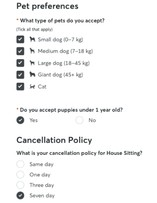

Enjoying this post? Help support our blog by leaving a tip from as little as £1!
Receiving messages
When a pet owner sends you a request, it will contain their name and a rough location. They can also write you a message, the length of which is up to them. Hopefully they will write you a message that gives you some information about their pets and home, but this isn’t always the case! It’s then up to you to decide whether the sit is right for you, and to ask as many questions as you need to to understand what will be required of you on the sit. One aspect of Rover that we find completely bizarre is the fact that pet owners can message sitters without having a complete profile. It’s only once they’ve sent a message to sitters that they are then prompted to add information such as their address, photos of their pets, and any care information. For this reason we have a section on our profile asking pet owners to complete their profile as soon as they have messaged us, in order for us to consider their sit at all. This aside, it’s still important to ask the pet owner questions and make sure you have all the information you’ll need to compete the sit safely and happily! Rover will prompt you to arrange a ‘Meet and Greet’ where both parties meet before booking in a house sit, but due to us travelling and pet sitting full time this isn’t always possible, and we find a video call is sufficient in most cases.
One point to mention is that Rover rewards you for responding to owners promptly, and your average response time will be displayed on your profile. Don’t rush your response solely for this reason – it’s still important to consider whether the job is right for you – but you can always respond promptly with an initial message asking for more information, or to arrange a video call so you don’t affect your response time. If you don’t think the sit is right for you, for whatever reason, it’s best to respond to the owner to let them know and then archive the conversation. If you leave the request open, your profile may not show up in search for those dates and you might miss out on jobs from other pet owners looking for sitters during that time.
Booking a pet sit
Once all parties are happy with the arrangement, as the sitter you will then click Accept in the message to confirm the booking. The owner will be prompted to pay the full amount for the booking, including a 15% Rover service charge (capped at £49 per booking), and when they have done so this officially books in the sit and your Rover availability calendar will be automatically updated with the booking. Rover protects sitters’ and owners’ real phone numbers by giving you each a ‘Rover number’, where messages sent through the site will come through to your phone as text messages. This means you can easily stay in touch with the other party while keeping all conversations on the site, in case of any disputes.
Cancellation policies
Depending on the cancellation policy you select when building your profile, the pet owner will have a certain amount of time in which they can cancel the booking in order to receive a full refund. The Rover cancellation policies for house sits are:
- Same day: A full refund is available if a pet owner cancels before the booking begins. If cancelled on or after the beginning of the booking, a 50% refund is available for the first seven cancelled days, and a 100% refund is available for any additional days.
- 1 day: A full refund is available if a pet owner cancels by 12:00 pm the day before the booking begins. If cancelled later than 12:00 pm the day before the booking begins, a 50% refund is available for the first seven cancelled days of the service, and a 100% refund is available for any additional days.
- 3 days: A full refund is available if a pet owner cancels by 12:00 pm three days before the booking begins. If cancelled later than 12:00 pm three days before the booking begins, they’ll receive a 50% refund for the first seven days of the booking, and a 100% refund is available for any additional days.
- 7 days: A full refund is available if a pet owner cancels by 12:00 pm seven days before the booking begins. If cancelled later than 12:00 pm seven days before the booking begins, they’ll receive a 50% refund for the first seven days of the booking and a 100% refund is available for any additional days.
There is no ‘right’ cancellation policy to select – it really depends on your personal circumstances. For us, as full time, nomadic pet sitters, if a pet owner were to cancel a booking the day before this would put us in the difficult situation of having to find accommodation last minute. Not only is this stressful, but costly too. For this reason we set our cancellation policy to seven days, so that if an owner cancels last minute we still receive some compensation that we can then put towards finding last minute accommodation. If you’re only looking to complete sits within a few miles of your home, you might not be put out with a last minute cancellation and can therefore afford to be more lenient, choosing the 1 day or same day cancellation policy. It’s worth taking the time to consider which policy works best for you, especially as it’s Rover who holds the payment and you won’t be able to control the refund once your cancellation policy is locked in for a sit (though you can update your policy for further sits).
How do you get paid as a sitter? What are the fees?
Assuming you don’t need to rely on your cancellation policy, and all goes as planned with the house sit, the owner pays the full amount upfront to confirm the booking and the funds are then held by Rover. On top of your rate, Rover charges the pet owner a 15% service charge for each booking, which is capped at £49 per booking. Rover takes a 15% cut of your earnings, and helpfully they tell you how much you’ll earn from each booking when you set your service rates in your settings. For example, if you set your base service rate at £40, there is a message underneath that reads ‘What you’ll earn per service: £34’, meaning you don’t have to spend time calculating your cut! If there’s a certain number you’d like to earn per day while pet sitting, it’s worth adjusting your rates to account for the fact you’ll only be taking home 85% of the total payment. Once you have completed the house sit, the payment will be automatically deposited into your back account within 5 working days of the last day of the house sit. Personally we love this system – it ensures both parties can rest assured the funds are being kept safe until the house sit has ended. We also don’t mind the fees – obviously we’d love to take home 100% of our rate – but in our opinion it’s worth the cost as Rover puts your profile in front of thousands of local pet owners looking for your services.
What happens after a sit?
Once the sit is complete and your funds are on their way, the pet owner will receive an email from Rover prompting them to leave you a review for your services. Reviews are such a big part of Rover – they help future clients see that you’re good at your job, and the more positive ones you have, the better! Pet owners don’t always remember to fill these out, so if they haven’t left us a review around a week after we leave a sit, we send them a message to politely ask for one. We’ve never had anyone decline yet, and we’re happy to say we only have 5-star reviews on our profile!
As a sitter, you can lock rates for future bookings with an owner, so they know the rate will never increase, or you can choose to offer a discount if you’d like to encourage them to book with you again. To date we’ve never chosen to do either, and yet have still found multiple owners prefer to book with us again as they and their pets have come to know and trust us, and they recognise the value in this. If you choose to book a repeat client through Rover, this will show on your profile as ‘1 repeat pet owner’ – just another way for future clients to see that other pet owners trust you to care for their pets!
Points to consider – learn from our mistakes!
We’ve been on Rover for four years now, and over the years we’ve updated and amended our settings countless times as our needs changed and we learned from our mistakes! Here’s just a few things to think about when using Rover:
- Choosing your base service rate. Our biggest piece of advice when it comes to your rates is to search the site for people in your area who offer the same services as you. This allows you to see what the average rate is in your area, and you can either choose to match this or slightly undercut the competition in the hope that you’ll receive more bookings to get you started. It’s important not to devalue the job though – remember, it’s still work and you don’t want to force others to bring down their rates. Once you have a few reviews on your profile, and a few new photos from your Rover sits, you’ll find it easier to compete with others who have been on the site for longer. It’s worth noting that your base rate for sitting includes the care of one pet, so make sure you’re charging for the amount of work involved in caring for one pet straight off the bat. If you’re pet sitting as a couple, like us, you can definitely afford to set higher rates as pet owners are receiving two sitters in one booking! Equally if you’re highly experienced you may be able to set a higher rate from the beginning – something we didn’t do, and swiftly amended after a few initial low paid gigs.
- Choosing your additional rates. I can’t begin to count how many times we’ve adjusted these over the years. Another aspect of Rover that we love is the nuanced rate card – you can set additional rates for peak times (like bank holidays), additional dogs, cats, and a puppy rate. After a particularly energetic sit with an untrained 6-month-old rescue puppy, where we spent every day regretting our low rate, we increased our puppy rate to be more than our dog sit rate due to the extra level of care involved in looking after a young dog. If you’re a solo sitter, having a high additional dog rate might be pertinent to reflect how much extra work it will be for you to handle multiple dogs by yourself, and this may encourage owners with only one dog to contact you. (It’s up to you to decide if this is a positive or a negative).
- Every sit is different! We’ve experienced a few suboptimal sits through Rover (see: untrained 6-month-old rescue puppy) though nothing where we felt unsafe or felt we couldn’t handle the situation. Saying this, we now have over five years of full time pet sitting experience. It’s important to realise going in that you might not always have a relaxed time, but it makes the relaxing sits all the more sweet! For one Rover sit we cared for two aloof cats for a week, at another we cared for two strong husky dogs who required daily walking on full body harnesses. As a couple we often receive challenging house sit requests, for example caring for reactive dogs, as owners are keen to have two pairs of hands to care for their pets. Again, the most important thing is to be honest with yourself and the owner about your abilities and know what you can and can’t handle, especially if you’re a solo sitter.
- Waiting for jobs. As we’ve mentioned, as a sitter on Rover you effectively sit and wait for owners to contact you with jobs. Due to a number of factors – the time of year, your experience, your location, your rates – it might be a long waiting game and can be frustrating for those hoping to make pet sitting a full time job. If you’re really desperate for bookings, you can always adjust your rates to get some initial bookings and subsequently, reviews. Initially we weren’t used to waiting to be picked, but be patient and make sure you’re doing everything you can to let owners know you’re the person for their sit. This brings us to…
Our top tips for success as a Rover sitter!
If you’re looking to be successful on Rover, whether you’re using it as a side hustle or a full-time job, the following are our top tips for a fantastic experience!
- Gain some pet care experience beforehand. Not only will this help you when filling out your profile as you’ll have photos with pets and experience to cite, but it will also prepare you for what it’s like to care for other people’s pets and homes. We see a lot of sitters who cite ‘my family had a dog when I was growing up’ as their dog care experience… Having a dog at home as a child, and being a professional pet sitter, are wildly different! Make sure you know what the job involves, and that you’re prepared to take it seriously – after all, someone is trusting you with their home and fur baby! Before we began house sitting, we used sites like Borrow My Doggy to walk dogs and cared for friends’ and neighbours’ pets to gain experience. Do this and you’ll not only get more of a feel for what’s required of you, but you’ll find you’re more likely to receive bookings on Rover too.
- Spend time on your profile. There are hundreds of thousands of sitters and walkers on Rover. That’s a lot of competition! Especially if you’re just starting out and there are hundreds of other sitters in your area with verified reviews from previous Rover bookings. The best way to increase your chances of receiving messages for house sitting jobs is to create a stand-out profile. Use a clear photo of you as your main picture, and make sure you have a good variety of subsequent photos. Include in-depth, but relevant, information about yourself and your experience on your profile and let owners know what makes you different from other sitters, whether it’s your ability to be flexible or your years of pet care experience. For more tips, see our dedicated blog post about creating a successful pet sitter profile.
- Keep your calendar updated. It’s always a good idea to stay organised, but moreover, Rover marks profiles that have recently edited their availability with ‘Calendar recently updated’ in search. This shows pet owners that the sitter has been recently active on the site, and is therefore more likely to respond. We have Rover bookmarked on our laptops so we remember to confirm our availability daily – especially in times when we have lots of dates available.
- Respond promptly to requests. At the top of your Rover sitter profile, there are two stats: your response rate, and your response time. The first is the percent of messages you have responded to, and the second is the average time it takes you to reply to a first message from a pet owner. The response rate and time on our profile have always read ‘100%’ and ‘Under half an hour’, respectively. This lets pet owners know that we will always respond to messages, and that we’ll do so quickly. As we’re already covered, these stats being on your profile shouldn’t pressure you into saying ‘yes’ to a sit before you’ve taken the time to consider whether it’s right for you – you can always send an initial message to say you’d like to chat further. We attribute a lot of our success on Rover to how quickly we respond to messages, as you never know how many sitters the owner has contacted for their sit! Responding quickly increases the likelihood that you’re the first to reply to the request and, all being well, the owner will choose you as their sitter.
- ALWAYS arrange a meet and greet or video call before booking a sit. This is something we’ve been doing for years, prior to every house sit we book, even before we began using Rover to find our sits. Don’t feel like you have to say yes just because you’ve been invited, and don’t get blinded by focusing on the money you’d earn from the sit! It’s very important, for all parties, to go through your personal checklist of questions to make sure the arrangement is right. Let us tell you from our experience – the job could pay the best rate in the world but if the situation is challenging or the owner forgets information in their initial message, it doesn’t matter how much money you’re being paid, you won’t enjoy the sit. You’d be surprised at how vastly the vibe differs between speaking to someone through messages, and speaking to them on a call or in person too. As we travel and house sit full time, it’s rare that we’re in the right place at the right time to arrange an in-person meeting. While Rover will prompt you to arrange a face-to-face meeting, we find that in most cases a video call is sufficient as you can ‘meet’ the owners, see the pets, and ask any questions you may have about the sit. There have been a few rare occasions when we’ve felt good about booking a sit, only to speak on a video call and get a lot more information about how the pets behave day to day, and subsequently we’ve turned down the job. Which leads us to…
- Know when to say no. This one can be difficult in any job! But it’s important for both you and the pet owner that you’re honest about your abilities and whether you truly believe you can carry out the duties required of you on sit. As a couple, we get a lot of messages from owners with nervous, reactive or otherwise challenging pets as they’re looking for two people to help and don’t mind paying more for this. Even with both of us on the job, if we’re concerned for our safety or worried that we won’t be able to carry out the responsibilities, or even enjoy the experience, we’ve learnt to turn the job down. Owners have always responded positively to this and thanked us for being honest – at least they know why we’re declining and can move on with their search. We’ve never found it affects how often we show up in search, either. In the times when we’ve ignored the warning signs and gone ahead anyway, it’s lead to a difficult job for us which never feels worth it! Make sure you’re enjoying the experience as well as booking jobs for pay.
- Get as many positive reviews and testimonials as you can! The more people you can ask to give you a glowing testimonial when you join Rover, the better! At this stage you won’t have any Rover verified reviews and will need people to vouch for you. When you do have some Rover sits under your belt, don’t be afraid to politely ask the pet owner to fill out a review for you (owners will be prompted to do so after a sit has ended, but sometimes they forget!)
In conclusion…
From our experience as full time pet sitters, Rover is a wonderful site to use for pet sitting! If we ever settle down in one location again, we would love to offer the dog walking and dog boarding options too as we really believe the process of the site just works. Of course, this review of Rover is based solely on our experience with the site over the past four years, and we have completed every single one of our house sits together as a couple. If you’re a solo sitter, make sure you’re not biting off more than you can chew as the buck will stop with you on-sit! As with any job, you’ll have a much more positive experience if you check in with yourself. If you don’t want to care for puppies – don’t! Simply uncheck that box in settings. Likewise, if you only want to house sit locally then set your service radius to a few miles. The best part of Rover is that you can tailor your services to suit your situation, whether you have your own home or are fully nomadic like us! In times when we’ve had gaps to fill in our calendar, Rover has been another site to connect us with pet owners and ultimately, continue funding our travels via house sitting! If you can stay on top of your calendar, profile, and messages on Rover, it will be a great way for you to run a profitable house sitting side hustle or business.
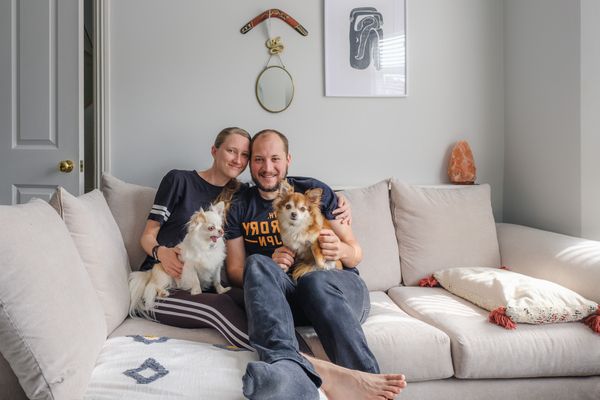
We are Chris+Suze
Related Posts
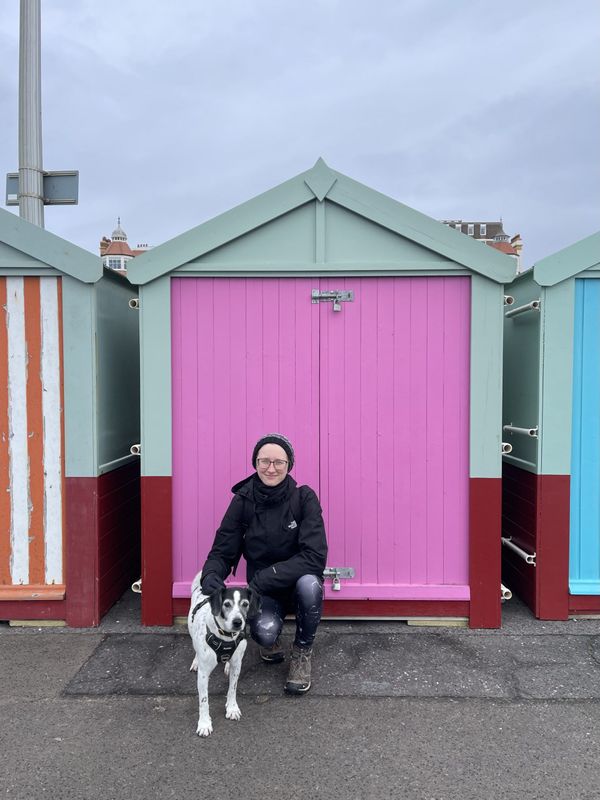
Thank you for reading!
We hope you’ve found this review helpful! If you’re ready to join Rover as a pet sitter, use our link to get started. Make sure you check out our Rover FAQs blog post too. For more pet and house sitting posts, head to our blog, or follow us on Facebook and Instagram for photos from our pet sitting adventures. You can also check out other pet care products and services we recommend.
